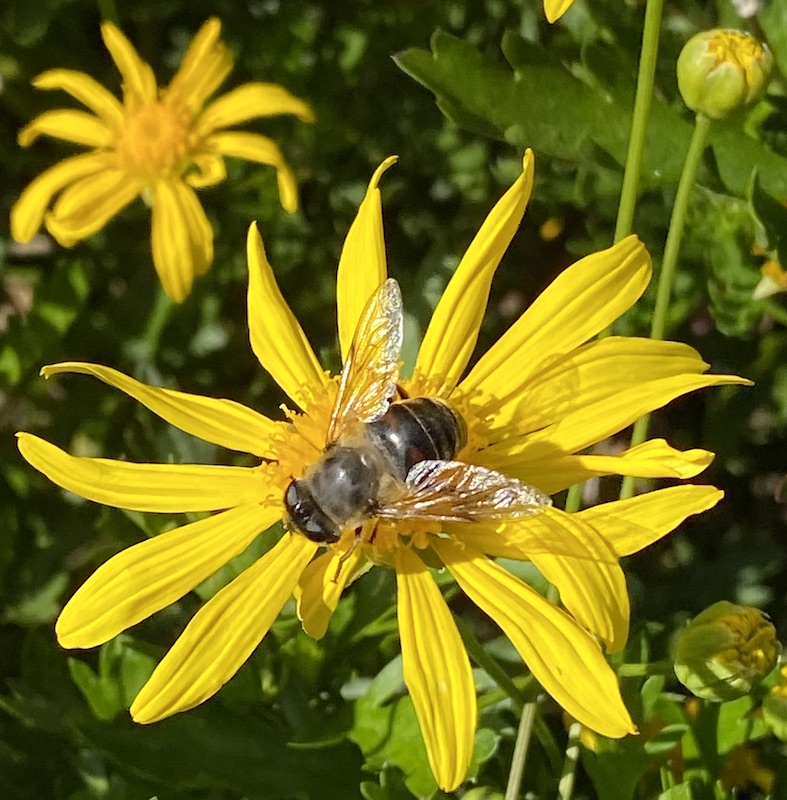Whilst I have been interested in, and observed hoverflies since c.2013, it is only this year that the interest has deepened as lockdown drastically reduced my nature watching options. Inevitably, as interest broadens so does enjoyment and knowledge. So a new batch of pictures of one species has deepened my ability to confidently ID them.
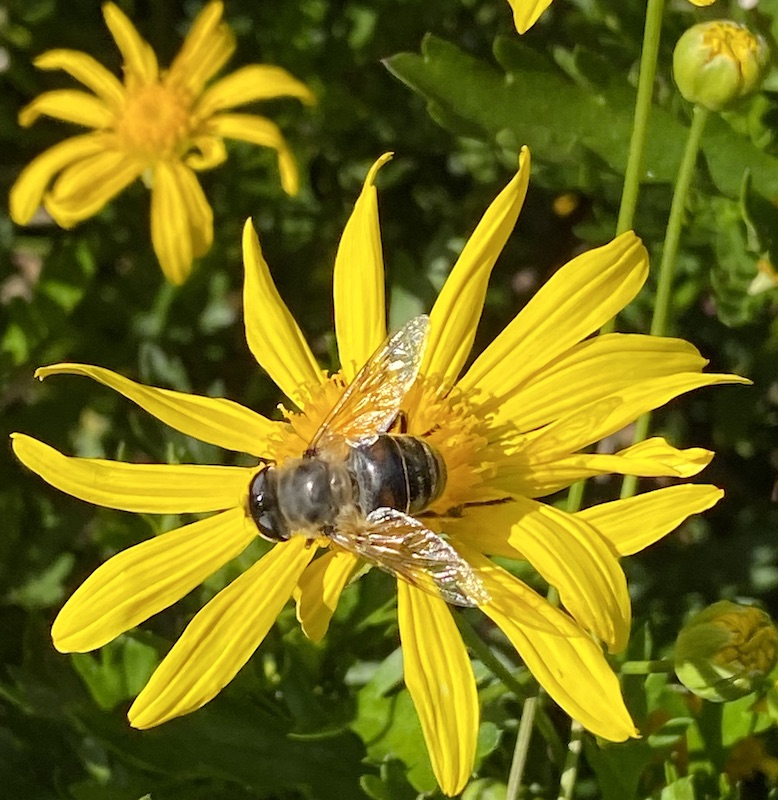
Common Drone Fly Eristalis tenax
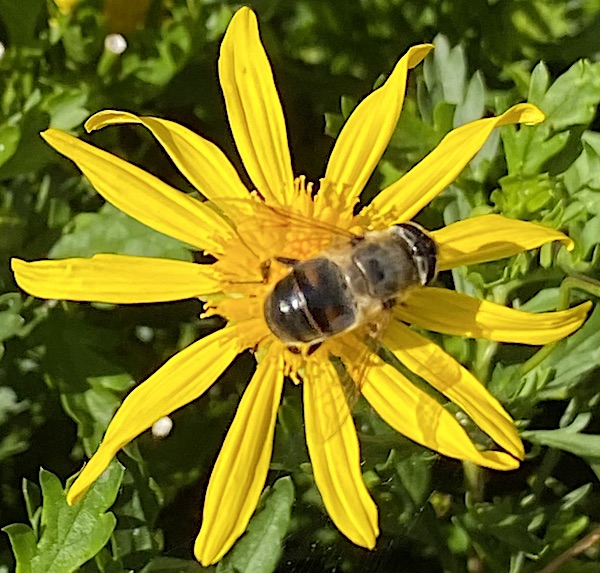
So what distinguished it from other, similar species? These are large hoverflies and other drone flies, which are bee mimics share their sturdy shape and generally dark colouring. Because of their size they are noticeable. In the photo below it is possible to see the distinct features of the wing, the patterns of cells, loops and lines is often diagnostic.
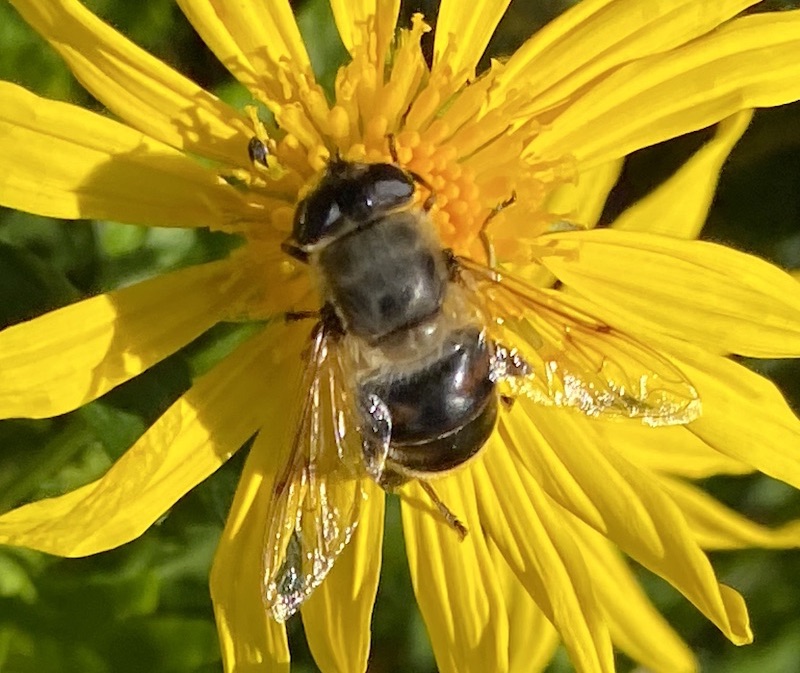
The ‘scutellum’ is the crescent-shaped body part at T1 where the thorax (the middle of the three parts of all insects, equivalent to our chests) meets the abdomen (the tail section). In this case the colour is a yellowish tan.
The overall head shape is also often diagnostic whether it be the whole head, the ‘frons’ (forehead where the antenna stick out), the eyes, or the space between them. In this species the gap between the eyes is a broad, dark triangle, see below. They also have a vertical stripe across the eyes which is not easy to see without considerable magnification.
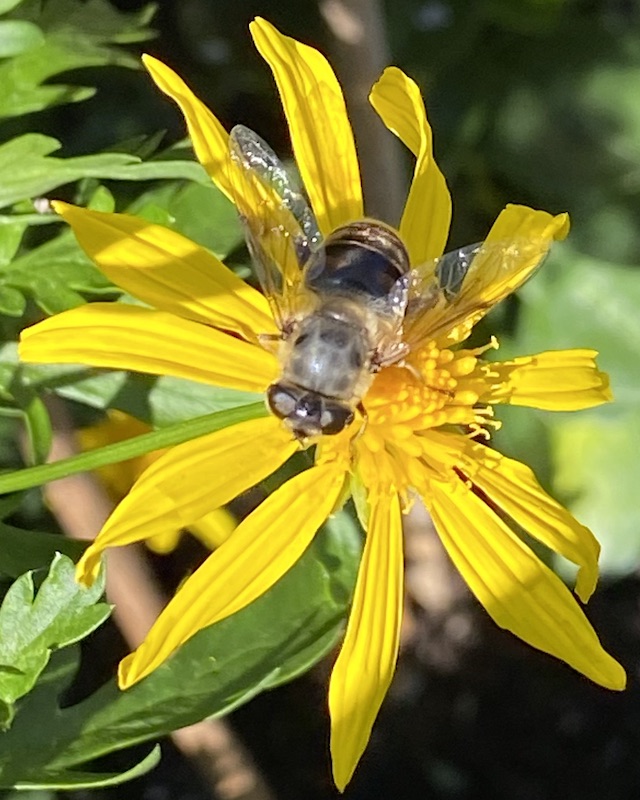
Many hoverflies have brightly coloured abdomens with patterns on each segment – there are four segments number from top to almost tail T1, T2, T3 and T4. The last small area is the ‘capsule’ housing the genitalia. In this case there is just one faint pattern of brown to orange triangular markings that don’t meet in the middle in T2.
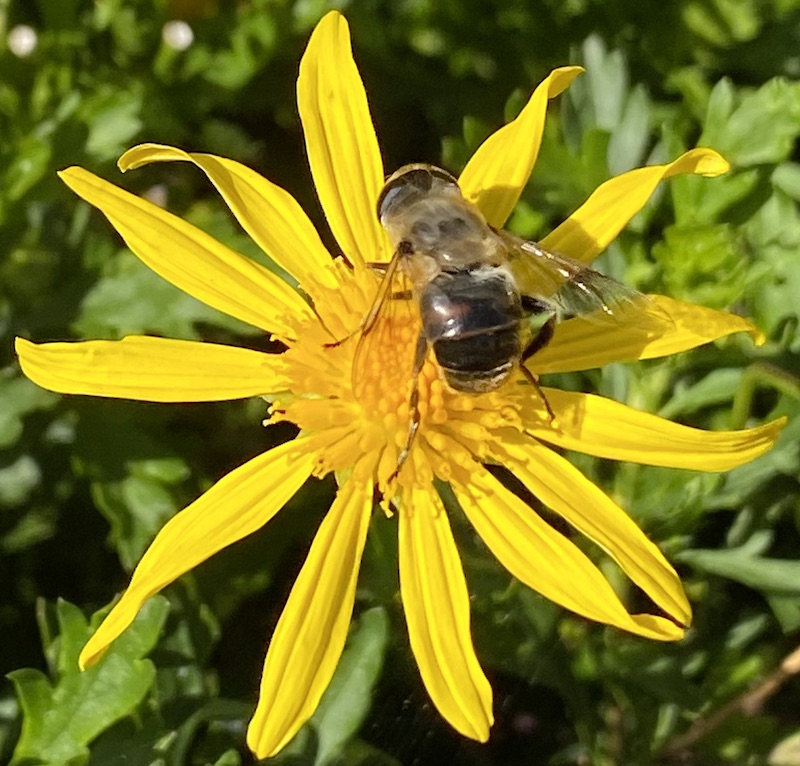
Legs also vary in colour and shape. They have three section called after the bones in vertebrate legs. The top section being femur, then, after the ‘knee’ the tibia, and below the ‘ankle’ the tarsal segment which is subdivided ending in the claw. Important in this species is the enlarged hind tibia which curves, as you can see above on the right.
In some species the main part of the thorax has markings including stripes, and in one case a marking like batman. In the case of this species there are just faint light markings as below.
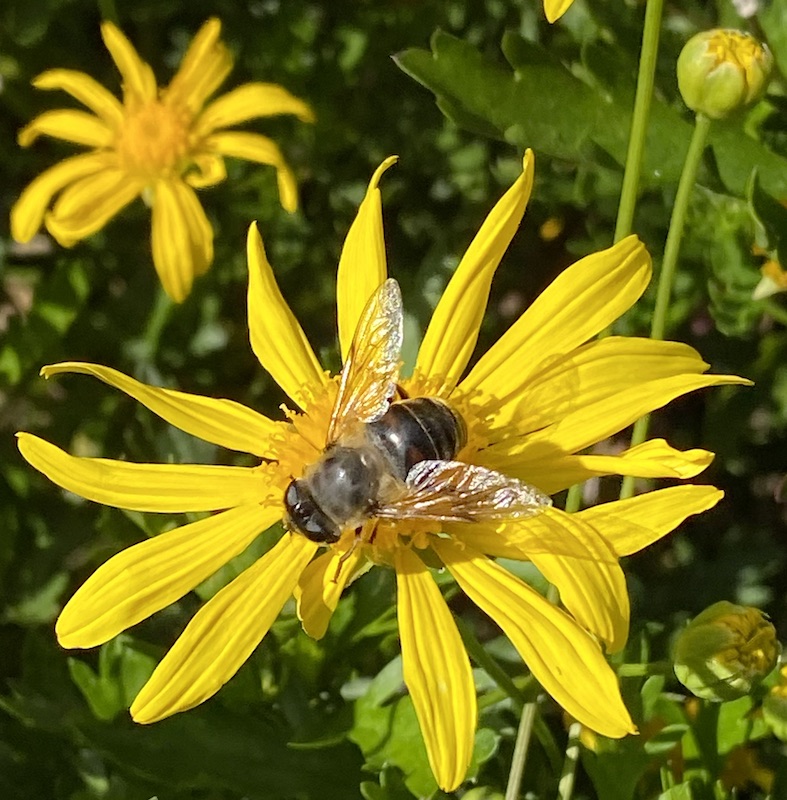
To generally distinguish flies of all sorts from bees, hemiptera, etc they do not have narrow ‘wasp’ waists. They have two wings only the other pair has become a stubby rod or knob which helps them position themselves when flying. Antenna are usually short and stubby rather than the very long feelers as in bees etc